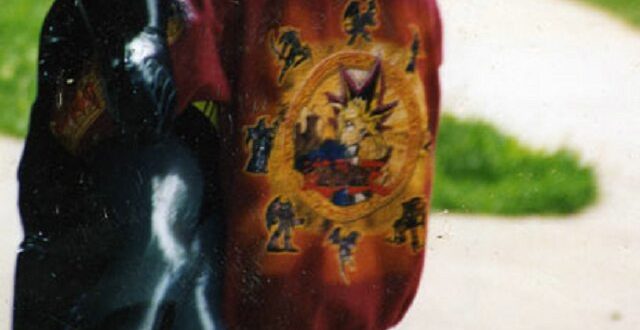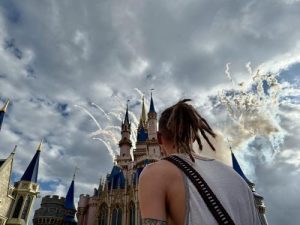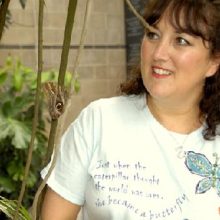Your shadow and inner child are two of the most primary archetypes that make you who you are. Integrating them more consciously into your personality is a gigantic task, but with the most profound rewards for yourself and the world.Your inner child is peering through all the surface distractions of your life. How does they feel about what you have wrought in your adult life?
“In every adult there lurks a child— an eternal child, something that is always becoming, is never completed, and calls for unceasing care, attention, and education. That is the part of the personality which wants to develop and become whole.”
— C.G. Jung
Your inner child is peering through all the surface distractions of your life. How does they feel about what you have wrought in your adult life?
The occurrence of this card indicates a need to locate your inner child. It’s become a New Age cliché to talk about your “inner child.” But this aspect of the psyche is as real as any bodily organ. Many years ago, I had an experience of an unhappy inner child breaking through. It was a shocking, even devastating, episode. Still, ultimately, it was healing, and my awareness of the state of my inner child has been greater since then.
Like a tree with rings that remain from its earlier seasons, the adult psyche seems to be a superimposition of new layers on top of earlier personalities that continue to exist within.
The inner child often embodies our emotional self — a less-conditioned self closer to our essence and more independent of the compromises and adaptations we have made to function as adults in the world. While your adult ego may be busy thinking and laboriously trying to navigate through all the practical problems of the adult world, your inner child lives closer to feelings and is more concerned with love, nurture, and imaginative play. It may want to rebel from the stern disciplines, suppression of feeling, and dutiful busyness of many adult lives.
Of course, we should not let our inner child, or any other subpersonality, rule us. But it is good to remain empathically in touch, especially during difficult times when your inner child is likely to be lonely and unhappy. Sympathetic consolation may do much to gain its cooperation.
Peel back the layers and discover what this core aspect of yourself has to say and how it views your present existence.
Life can easily turn you into a cynical, self-serving, turned-off adult. Keep open your connection to your magical inner child and their sense of creative play.
“No tree, it is said, can grow to heaven unless its roots reach down to hell.”
― Carl Jung
“And I am divine in my worst hour as much as I am in my best.”
— Jack Spencer Savage
“Until you make the unconscious conscious, it will direct your life and you will call it fate.” — Carl Jung
“Wholeness is not achieved by cutting off a portion of one’s being, but by integration of the contraries.” — Carl Jung
“Everything that irritates us about others can lead us to an understanding of ourselves.” — Carl Jung
“Knowing your own darkness is the best method for dealing with the darknesses of other people.” — Carl Jung
“I Stood Upon a High Place”
I stood upon a high place,
And saw, below, many devils
Running, leaping,
and carousing in sin.
One looked up, grinning,
And said, “Comrade! Brother!”
— Stephen Crane (1871-1900)
There is no such thing in nature as an H-Bomb, that is all man’s doing. We are the great danger. The psyche is the great danger.
— C.G. Jung
Be aware of the darker side of yourself and know what it is saying to you.
The brighter the light, the darker the shadow.
Every person and archetype has a shadow side. If you don’t see the shadow of a person, you don’t see the person and are blinded by idealization. If you don’t see your own shadow, you are in denial and will project your shadow onto others.
We all have a side of ourselves we consider dark or, even worse, don’t consider at all. Our shadow may include appetites, lust for power, manipulative agendas, chaotic emotions and sub-personalities, addictions, and hidden talents.
The more we deny the shadow, the more it weighs us down. But if we embrace its reality, learn how it works, and then integrate it into our awareness so that it cannot rule us, we become enlightened. We become wiser and more empathic for having a shadow and discover hidden treasures in the dark continents of the unconscious.
If we are at war with our shadow, then it dominates us. We project it onto individuals and groups and act out our inferior side. If we are unable to accept our shadow, we become hungry ghosts, forever seeking outside recognition to compensate for the doubts that forever gnaw at us. When we recognize and accept our imperfections, they strengthen us, and we become more nourishing and attractive to others.
All people have a shadow, but only the strongest work on integrating their shadows with acceptance and love. Summoning the intense moral courage to accept your shadow is an ongoing process that creates healing for yourself, those close to you, and the entire world.
The strongest shadow denial is found in those (left or right, religious or secular) who consider themselves righteous champions of the good striving to save the world. Such people forever talk about a shadowy “they,” and want others to “wake up.” They naively assume they are awake when they are actually asleep inside a collective dream whose chief function is a projection of inner demons out into the world.
As Goethe said, “If you want to clean up the whole world, begin with your own doorstep.”
Another dangerous form of shadow denial is those who don’t take the time to learn about current events to avoid “negativity” and, therefore, abdicate their duty as citizens allowing dangerous forces to gain power while they fail to pay attention. As Jefferson said, “The price of freedom is eternal vigilance.” Those who can’t bear to hear opposing points of view and want to censor, cancel, or repress what’s outside their ideological bubble are shadow super-spreaders.
Those committed to a rigorous ongoing process of reclaiming their shadow become valuable spiritual allies for those close to them and the whole world.
“The dark is indeed fascinating and informative, but it is indeed also dangerous. It is on journeys into it, though, that we find ourselves. Every initiate comes to the same shocking place, for all the paths of the underworld through which we are traveling lead to it. There is a mirror there, old and full of shadows, and it is in the hints it returns of our faces— our dark, dark faces— that we find ourselves.” — Whitley Streiber
see: The Shadow: Our Darker Side Here’s an excerpt:
Choices are made and direction is given to personality development. The shadow can be viewed as the unlived life resulting from a certain pattern of life choices. Thomas Moore in The Care of the Soul states that, “The person we choose to be, … automatically creates a dark double — the person we choose not to be.”
Jung on the Shadow and google: “shadow Jung” for more.
Shadow School by my colleague Rob Brezsny. Here’s an excerpt:
In the Middle Ages, the Catholic Church branded cats as “ambassadors of the devil” and called for their mass extermination. The virtual disappearance of felines from Europe was an important factor in propagating the Black Death, which killed 25 million people between 1347 and 1352. The disease was spread by fleas that lived on rats, whose populations had soared in the absence of their natural predators.
For a visionary version of the hidden connections between shadow and light see:
Savage Reflections — the Soulful Poetry of Jack Spencer Savage
My sci-fi epic Parallel Journeys is what I call a “trans-Manichaean” mythos, it goes beyond the Manichaen idea of a battle between good and evil to perceive hidden interconnections between light and dark forces. The book is filled with insights about shadow integration. Parallel Journeys,can be read free on this site. If your prefer Audible, Kindle or physical versions, those are all available on Amazon.
 ZapOracle.com home to the free 720-card Zap Oracle
ZapOracle.com home to the free 720-card Zap Oracle






